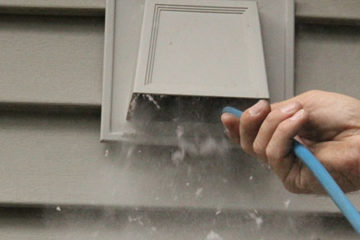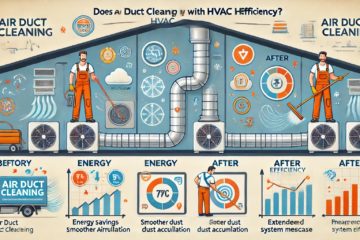What is Radon Gas, And What You Should Do About It.

Radon is a naturally occurring, radioactive gas produced due to the breakdown of uranium in soil, rock, and water. It is a colourless, odourless, and tasteless gas that can quickly go undetected in a home or building. However, it can pose a serious health risk if it accumulates to high levels in an enclosed space.
Radon gas is the second leading cause of lung cancer in the United States and is responsible for an estimated 21,000 deaths yearly. It is hazardous for people who smoke, as the combination of radon and tobacco significantly increases lung cancer risk.
Radon is present in the air we breathe and is typically found at low levels in outdoor air. However, it can accumulate much higher levels inside homes and buildings, especially in poorly ventilated areas. This is because radon gas can seep into homes through cracks in the foundation, floors, and walls and can also be found in well water.
One of the main challenges with radon gas is that it is difficult to detect without proper testing. While there are no visible signs of its presence, there are steps that homeowners can take to protect themselves and their families from the potential dangers of radon.
One way to test for radon is to use a radon test kit, which is available at most hardware stores. These kits are relatively inexpensive and easy to use, and they can provide important information about the radon levels in a home. Homeowners can also hire a professional radon testing company to conduct a more thorough evaluation of their homes.
If high radon levels are found in a home, there are several ways to reduce the levels of radon gas. One standard method is to install a radon mitigation system, which uses a series of pipes and a small fan to ventilate the gas out of the home. This system can be installed by a professional and is usually effective at reducing radon levels to safe levels.
It is important to regularly test for radon and take steps to reduce its levels if necessary, as the long-term health risks associated with radon exposure can be severe. While radon gas is a naturally occurring substance, it is essential to be aware of its potential dangers and to take steps to protect yourself and your family from its harmful effects.
Protect Yourself With Digital Radon Detector
 A digital radon detector is a device that measures the levels of radon gas in a home or building. It uses electronic sensors to detect the presence of radon and can provide real-time readings of radon levels.
A digital radon detector is a device that measures the levels of radon gas in a home or building. It uses electronic sensors to detect the presence of radon and can provide real-time readings of radon levels.
Digital radon detectors are typically small and portable, and they can be placed in different areas of a home or building to provide a more accurate measurement of radon levels. Some digital radon detectors are placed on a tabletop or mounted on a wall, while others are designed to be placed in a specific location, such as near the foundation of a home.
Digital radon detectors can be a more reliable and accurate way to measure radon levels than traditional radon test kits, which rely on chemical reactions to detect the presence of radon. Digital radon detectors can also continuously monitor radon levels, allowing homeowners to track changes over time and take steps to reduce radon levels if necessary.
It is important to note that digital radon detectors should be calibrated regularly to ensure accuracy. They should also be placed in a location representative of the overall radon levels in a home or building.
Overall, digital radon detectors can be a valuable tool for homeowners concerned about the radon levels in their homes or building. They can provide important information about radon levels and help homeowners take steps to protect themselves and their families from the potential dangers of radon gas.
What To Do If Radon Is Found In Your Home
If radon is found in your home, it is essential to take steps to reduce the levels of radon gas to a safe level. The United States Environmental Protection Agency (EPA) recommends taking action to reduce radon levels if the radon concentration in your home is four picocuries per litre (pCi/L) or higher.
There are several steps you can take to reduce radon levels in your home:
- Seal any cracks or openings in your foundation, floors, and walls. This can help prevent radon gas from entering your home.
- Increase ventilation in your home. This can help reduce the concentration of radon gas by allowing it to dissipate more quickly.
- Install a radon mitigation system. This system uses a series of pipes and a small fan to ventilate radon gas out of your home. It is typically installed by a professional.
- Consider installing a radon-resistant barrier in your home. This can help prevent radon gas from entering your home through the foundation.
- Test your home regularly for radon. This can help you track changes in radon levels over time and take steps to reduce them if necessary.
It is important to note that reducing radon levels in your home can be a complex process and may require the help of a professional. If you are concerned about radon levels in your home, it is recommended to consult a qualified radon mitigation specialist to determine the best course of action.
Is Radon Mitigation Part Of the Building Code In Canada?
 Radon mitigation is not typically part of the building code in Canada. However, some provinces and territories have developed guidelines or recommendations for radon testing and/or radon mitigation in new construction and remodelling projects.
Radon mitigation is not typically part of the building code in Canada. However, some provinces and territories have developed guidelines or recommendations for radon testing and/or radon mitigation in new construction and remodelling projects.
The National Building Code of Canada (NBC) is a model building code used as the basis for the building codes of most provinces and territories in Canada. NBC does not have specific requirements for radon testing or radon mitigation in new construction or remodelling projects. However, it does require that the indoor air quality of a building be safe and healthy for occupants.
In Canada, the Canadian Radon Proficiency Program (CRPP) has developed guidelines for radon-resistant construction in new homes. These guidelines recommend using a combination of sealing cracks and openings in the foundation, installing a layer of gas-permeable aggregate under the slab, and installing a vent pipe system to help reduce radon levels in a home.
Overall, while radon mitigation is not typically part of the building code in Canada, there are guidelines and recommendations to help reduce radon levels in new construction and remodelling projects. It is essential for homeowners to be aware of the potential risks of radon gas and to take steps to reduce radon levels in their homes if necessary.
Is Radon Mitigation Part Of the Building Code In the United States?
 Radon mitigation is not typically part of the building code in the United States. However, some states and localities have adopted radon-specific building codes or guidelines that require radon testing and/or radon mitigation in new construction or when a home is being remodelled or repaired.
Radon mitigation is not typically part of the building code in the United States. However, some states and localities have adopted radon-specific building codes or guidelines that require radon testing and/or radon mitigation in new construction or when a home is being remodelled or repaired.
The International Residential Code (IRC) is a model building code widely used in the United States and has been adopted by many states and localities. The IRC includes radon testing and mitigation provisions in new construction and remodelling projects. Specifically, the IRC requires that radon-resistant construction techniques be used in all new construction and in repairing or replacing the foundation in existing homes.
In addition to the IRC, the United States Environmental Protection Agency (EPA) has developed guidelines for radon-resistant construction in new homes. These guidelines recommend using a combination of sealing cracks and openings in the foundation, installing a layer of gas-permeable aggregate under the slab, and installing a vent pipe system to help reduce radon levels in a home.
Overall, while radon mitigation is not typically part of building code in the United States, there are guidelines and recommendations to help reduce radon levels in new construction and remodelling projects. It is essential for homeowners to be aware of the potential risks of radon gas and to take steps to reduce radon levels in their homes if necessary.
Where is Radon Most Commonly Found In Canada?
Radon is a naturally occurring, radioactive gas produced due to the breakdown of uranium in soil, rock, and water. It is found in all provinces and territories in Canada and is present in the air we breathe at low levels.
However, radon can accumulate at much higher levels inside homes and buildings, especially in poorly ventilated areas. This is because radon gas can seep into homes through cracks in the foundation, floors, and walls and can also be found in well water.
Certain areas of Canada tend to have higher radon levels due to uranium-rich soil and rock. These areas include:
- The Prairie Provinces (Alberta, Saskatchewan, and Manitoba)
- The Northern Territories (Yukon, Northwest Territories, and Nunavut)
- The Atlantic Provinces (New Brunswick, Nova Scotia, Prince Edward Island, and Newfoundland and Labrador)
However, it is essential to note that radon can be found in any home or building, regardless of location. It is recommended to test for radon regularly, especially if you live in an area with high levels of radon or if you are buying or selling a home.
Where is Radon Most Commonly Found In The USA?
Radon is a naturally occurring, radioactive gas that is produced due to the breakdown of uranium in soil, rock, and water. It is found in all 50 states in the United States and is present in the air we breathe at low levels.
However, radon can accumulate at much higher levels inside homes and buildings, especially in poorly ventilated areas. This is because radon gas can seep into homes through cracks in the foundation, floors, and walls and can also be found in well water.
Certain areas of the country tend to have higher radon levels due to uranium-rich soil and rock. These areas include:
- The Rocky Mountain region
- The Upper Midwest
- Parts of New England
- Northern Virginia
- Western Pennsylvania
However, it is essential to note that radon can be found in any home or building, regardless of location. It is recommended to test for radon regularly, especially if you live in an area with high levels of radon or if you are buying or selling a home.
What are the symptoms of Radon Gas?
Radon is a colourless, odourless, and tasteless gas that can be difficult to detect without proper testing. It is also a radioactive gas, and prolonged exposure to high radon levels can increase the risk of developing cancer, particularly lung cancer.
Radon is the second leading cause of lung cancer in the United States and is responsible for an estimated 21,000 deaths yearly. It is hazardous for people who smoke, as the combination of radon and tobacco significantly increases lung cancer risk.
There are usually no immediate symptoms of radon exposure. However, long-term exposure to high radon levels can increase the risk of developing lung cancer. Symptoms of lung cancer may include:
- Persistent coughing
- Chest pain
- Shortness of breath
- Coughing up blood
- Unexplained weight loss
If you are experiencing any of these symptoms, you must speak with a healthcare professional. It is also important to note that these symptoms can also be caused by other conditions and are not necessarily indicative of radon exposure.
Overall, it is essential to be aware of the potential risks of radon gas and to take steps to reduce radon levels in your home if necessary. This can include testing for radon and installing a radon mitigation system if necessary.
Search For Radon Mitigation Specialists Near You
Radon Specialists Near Me
Purchase A Radon Detector



